What has changed in east Portland since the Portland Bureau of Transportation implemented the East Portland in Motion (EPIM) active transportation plan 10 years ago? In the decade since, has the city kept its promises to address the area’s lack of infrastructure investment?
“2022 is a big year for these projects. Some did take longer, but now they’re on track.”
— Steve Szigethy, PBOT
PBOT is proud of progress made, but some advocates say more needs to be done.
PBOT’s ‘In Motion’ plans for creating and expanding active transportation systems in different parts of the city now extend across Portland. The ‘In Motion’ framework, of which EPIM was the first, is designed to encourage active transportation like walking, biking and taking public transit in order to create healthier streets and communities and help combat climate change and other goals.
As city, regional and state politics shine a light on infrastructure in east Portland, we wanted to know just how much progress has been made since the release of the EPIM final report in 2012, and how much remains to be done.
In the EPIM report, PBOT acknowledges the lack of investment and how it has impacted the area:
“East Portland… can be hard to navigate on foot or by bicycle or transit. Features that make active transportation attractive in other areas of Portland, like sidewalks, low‐stress bikeways, and frequent transit, are harder to find east of 82nd Avenue. Still, many people who depend on active transportation choose to live in east Portland for its lower housing costs, and often must walk, bike or wait for the bus in substandard conditions.”
As we’ve reported before, east Portland is a part of the city where some people, particularly Black people, were forced to relocate after being displaced from neighborhoods like Piedmont and Boise-Eliot. With East Portland in Motion, PBOT planners hoped to address some of these challenges.
Advertisement
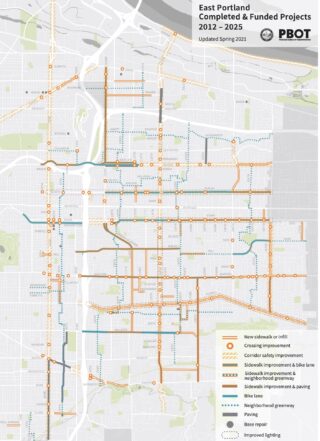
The 2012 EPIM report, and subsequent project planning, was developed after months of community brainstorming that involved east Portlanders sharing what they wanted from a new transportation plan. Some of their highest priorities were safe access to and from transit stops, development of different kinds of sidewalks, low-stress bikeways and a focus on creating conditions so that streets would be safe for children.
The recommended EPIM projects included sidewalk infill, crossing improvements, neighborhood greenways, protected bike lanes, bike parking, trails, roadway improvements and a focus on programs like Safe Routes to School and projects on the city’s High Crash Network.
Last year, PBOT released an EPIM status update to mark the 10-year anniversary. Looking at the last ten years, PBOT employees and east Portland transportation activists have varying thoughts on the success of the plan thus far and which areas are still important focus on.
While there remains a strong public narrative that east Portland doesn’t get the investment or attention it needs, PBOT staff say a lot of progress has been made.
Steve Szigethy, PBOT’s Capital Delivery Division Manager, shared in an interview with BikePortland that one of the most substantial categories of EPIM plans that have been completed are the sidewalk infill projects, which they separate into categories based on whether or not curbs or stormwater exist. Missing sidewalks on major arterial streets like Stark, Division and 122nd Ave have been repaired, and almost all of the more simple sidewalk infill projects that didn’t require PBOT to install curbs and stormwater drainage have been completed.
According to PBOT project data, they’ve designated just over $10 million each to the two types of sidewalk infill projects. All of the simple sidewalk infill projects have found funding and most have been completed or are in the process of completion, but only five out of 14 of the more complicated infill projects are done. Some examples of these incomplete sidewalk infill projects are at NE 111th Dr/Ave from Klickitat to Halsey and the SE Holgate Blvd shared pathway at 130th to 136th.
But Szigethy says PBOT is still paying attention to these more complex sidewalk infill projects, and many of them are well on their way to completion.
EPIM also outlined quite a few crossing improvement projects, categorizing them by different funding pools. The crossing improvement projects associated with sidewalk infill have been largely successful, like at crosswalks along 122nd Ave and SE Stark St at 160th Ave. The Oregon Department of Transportation (ODOT) and Metro have also funded crosswalk improvements along 122nd Ave.
Szigethy also points out the protected bike lanes – which were a fairly nascent concept in the city and country at the outset of the plan – that are now present in east Portland thanks to EPIM.
Advertisement
In combination with other PBOT programs like the Outer Division Safety Project, as well as a refocus on what protected bike lanes actually are, the city has demonstrated an effort to build a more substantial protected bike lane system in east Portland on Halsey/Weidler, Glisan and Division Streets.
Another key area of focus is the east Portland neighborhood greenway system. The ‘130s’ and ‘HOP’ neighborhood greenways debuted in 2020, and the 100s and 150s greenways are both being built or expanded, forming links through the area. Seven out of the 10 EPIM greenway plans are either completed or currently in construction.

As you can see in the chart above, PBOT identified 109 projects in the initial EPIM plan, of which they consider 61 “done” or “partial done” as of June 2021. That’s about 56% of the projects in 10 years. The city has since identified an additional 43 projects east Portland needs for a total of 152 projects they are currently tracking. Of those, they consider about half — 77 projects — done or partial done. The total amount of funding to complete all 152 projects would be around $319 million, when you add needed paving and bridge replacements the figure jumps to $346 million. As of last June PBOT says they’ve either already spent or plan to spend $204.7 million in the past 10 years.
To east Portland transit advocates like Jim Chasse, however, there is still plenty of work to be done. Chasse doesn’t want the spotlight to be taken off east Portland, and thinks it’s important to continue asking PBOT for more transparency on its plans.
Initially, PBOT’s plan was that EPIM projects would be completed in five years. In reality, getting some of these things done has taken a lot longer than that.
“There are lots of projects that haven’t been completed,” Chasse says, specifically pointing to the greenway projects that were delayed. With an increasing population in east Portland, Chasse says there needs to be an urgent focus on getting these active transportation projects completed.
Advertisement
Chasse has worked with Nick Sauvie, the executive director of the ROSE Community Development Corporation in outer southeast Portland, to advocate for more active transportation in the area. Sauvie has done an equity analysis of investments in different parts of the city that showed investment in east Portland hasn’t reached parity with other areas.
“It’s taken constant vigilance and advocacy to get the city to focus on east Portland.”
— Nick Sauvie, Rose CDC
“It’s taken constant vigilance and advocacy to get the city to focus on east Portland,” Sauvie says. “[Improvement] will take a level of investment that the city has come nowhere near reaching at this time.”
PBOT officials say that they can work on multiple things at a time, and just because the wheels may be turning on other ‘In Motion’ projects in other parts of the city doesn’t mean east Portland is being ignored.
Since EPIM was the first project the city worked on through this framework, Szigethy says PBOT has learned valuable lessons about projects moving forward – as well as the dangers of biting off more than it can chew.
“Some of EPIM’s projects were quite large,” Szigethy says. “Other ‘in motion’ projects are now more bite-sized, so they’re easier to get done faster.”
It’s important to keep in mind that PBOT works on east Portland projects outside of EPIM. The major investment on 82nd Avenue being just one example. ODOT has also stepped in to assist with funding in east Portland with plans like the Outer Powell Safety Project and many projects on 82nd Ave.
Beyond projects and funding prioritization, PBOT Planner Bryan Poole told us he thinks EPIM was a great way for like-minded people to voice their needs in a part of town that has been historically overlooked. “The great thing about EPIM is that it helped advocates rally together,” Poole says. “We’re continuing to grow in the data we use and who we reach out to to get an understanding of needs.”
Advocates in east Portland have also seen their priorities represented by a growing power base of political leaders. Oregon State Rep. Khanh Pham who was recently appointed to the legislature’s powerful Joint Transportation Committee, Portland Transportation Commissioner Jo Ann Hardesty and newly-appointed Metro Councilor Duncan Hwang are all east Portland residents who’ve taken their values around equity and transportation justice for their fellow neighbors with them into office.
That political backdrop is well-timed for EPIM’s 10th anniversary. Szigethy says east Portlanders can look forward to seeing more changes come to fruition this year.
“2022 is a big year for these projects,” he says. “Some did take longer, but now they’re on track.”



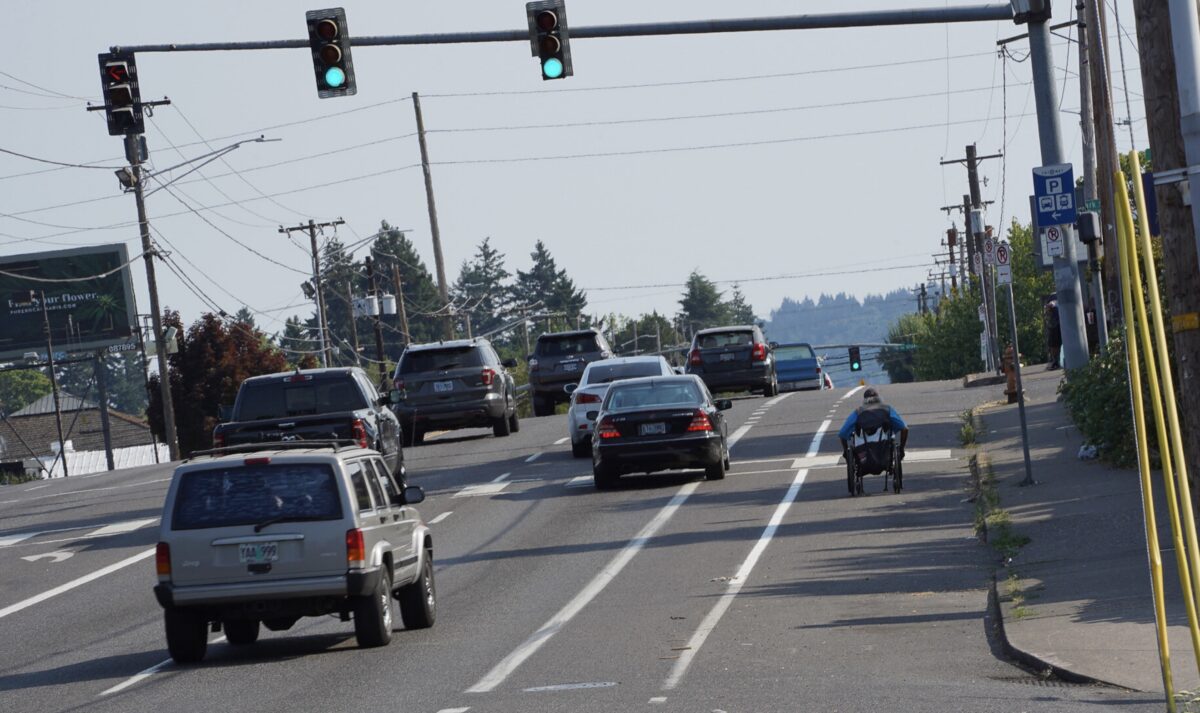


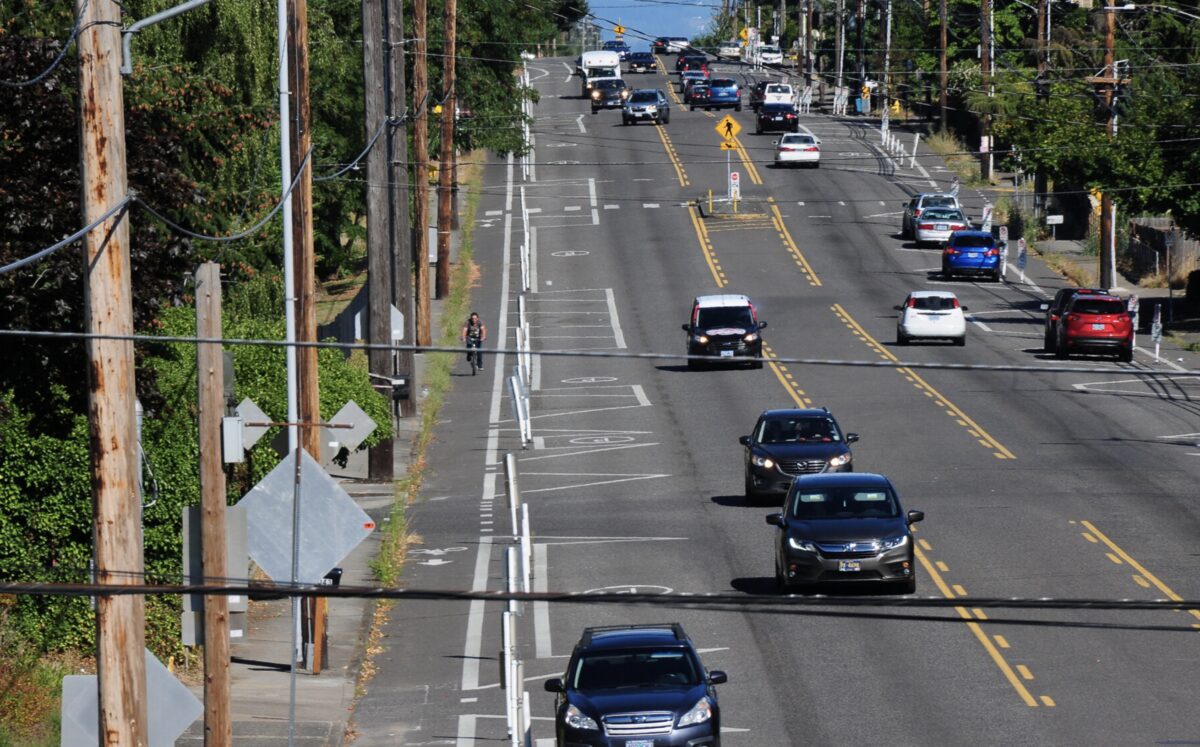

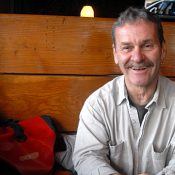
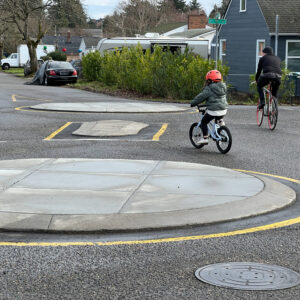

Thanks for reading.
BikePortland has served this community with independent community journalism since 2005. We rely on subscriptions from readers like you to survive. Your financial support is vital in keeping this valuable resource alive and well.
Please subscribe today to strengthen and expand our work.
Totally unrelated to this article, but Taylor’s been a great addition to the BikePortland team. I always find her articles engaging and insightful, while remaining true to the facts. Keep up the great work, Taylor!
100% agree!
Thanks, Hami!
Thank you so much!! Really appreciate your support 🙂
Excellent and comprehensive article!
One minor quibble: Hwang was appointed to the Metro Council; he hasn’t been elected.
Thanks, Ivan! And good catch, thanks for pointing that out.
“The great thing about EPIM is that it helped advocates rally together,” Poole says.
This was very true of EPIM. East Portland has always had bike advocates, both of local residents and advocates from across the city, but up until EPIM they had never really tried to work together on common projects, let alone creating a bike master plan for East Portland. Kudos to EPAPbike: Jim Chasse, Katie Larsell, Walter Lersch, Matteo Luccio, [myself], Tom Barnes, Tom Lewis, Susan Dean, the Reverend Brian Heron; EPAP members and staff Arlene Kimura, Linda Bauer, Lore Wintergreen, Nick Sauvie, and many others from East Portland pushing for improvements, but also from other advocates outside of East Portland such as Marianne Fitzgerald (SWNI) and Linda Nettekoven (SEUL). Also city staff Ellen Vanderslice, Steve Szigethy, Timo Forsberg, Roger Geller, April Bertelsen, Mark Lear, Dan Bower, and many others, plus Shelli Romero of ODOT, and probably most important, Mayor Sam Adams for breathing fire down the necks of the top PBOT officials to not only create the EPIM, but to implement sidewalk projects in EP and SW during major cuts at PBOT.
The BMP 2030 was a catalyst project in that it failed so spectacularly to provide anything useful for East Portland – even city council were perturbed – that the EPIM became the core of the new EP BMP. [In the BMP 2030, where is the equity in giving the richest parts of the city the densest and best bike network, but the poorest parts of the city the least dense and poorest-defined bike network? Isn’t that back to front?]
But the particular project that most pissed us off was a highly-touted federal stimulus sidewalk project along Glisan from 122nd to 132nd, a million dollars in 2010 for a substandard city sidewalk on a minor bus route, when we have so many other more needful projects. We can do far better than that. The problem was, we had never listed all those needful projects to city staff in a way that they could use – a ranked list neighborhood by neighborhood – 1, 2, 3, 4, 5, 6, 7th most important, etc. We also learned very quickly that to get projects implemented sooner, the ranked lists needed to be fed directly to city engineers in addition to our friendly local city planners, but without our planners knowing about the feeding.
I’m personally proud of the role I played on the EPIM, but more importantly the many wonderful people we worked with to create the plan (EPIM Plan = E-PIMP was a regular joke) and to implement “the easy stuff”, none of which was actually as easy as you might think. The EPIM not only has over $300 Million in projects completed, including $132 million for outer Powell, but it directly inspired numerous other projects such as the Division busway and new TriMet bus routes for over a half-Billion in new transportation investment for East Portland, but also hundreds of millions for new housing and commercial development, and accelerated gentrification in East Portland so much that I left in late 2015, an ironic victim of my own success as an advocate.
Now about that bike bridge on 132nd over I-84 on page 111…
82nd/Division intersection has been a travesty for biking for at least 6 months. Would love to see some reporting on that.
Thanks for the idea X. Can you tell me what specifically has made it a travesty?
Construction, missing bike lane markings, signals don’t jive with roadway layout..
Horrendous paving and potholes, endless shit accumulating on the side of the road that gashes tires, etc.
The “bike lanes” that are supposed to be on Division have been missing east of 82nd for that entire time. At least out toward 92nd, maybe farther but I haven’t stayed on it long enough to find out.
Thanks. I’ve been meaning to ride all of Division to check up on the Transit Project and see conditions generally. Appreciate the intel.
Thanks Taylor. Another good article.
What I see is the greatest challenge for East Portland moving forward is holding PBOT’s feet to the fire to fully fund EPIM then move on to EPIM 2.0.
What will it take to continue to get projects funded and built when your plan is 10 years old and in drastic need of an update. The Division safety project has produced situations where more cut through vehicle traffic will be diverted to surrounding neighborhoods and affect Safe Routes To Schools programs and other Greenway projects not mapped in EPIM. You have to remember that the initial EPIM plan included only those projects that could be funded and built in 5 years. We could easily gobble up another $100 million in East Portland projects to bring us to parity with some inner city neighborhoods.
I’ve thought quite a bit about the transportation system in Portland and what people’s needs will be in the next ten years. Certainly freight will be a big factor considering all the telecommuting we’ve been doing the past 2 years and having many of our household goods being delivered to our doorstep. I also believe people will want their neighborhoods, parks and schools to be more accessible via active transportation because they may be working from home either exclusively, or in a hybrid situation. Questions I think people in positions of power should be asking right now.
And what about that bridge over I-84 and the railroad tracks at NE 132nd? East Portland has asked repeatedly for this project to be put into the Transportation System Plan (TSP), but PBOT has failed to add it.
That It’s taken 10 years to complete just 25% of the EPIM projects is no surprise to me. Upwards of 75% of EPIM projects had been scoped from plans developed in 1996, but never funded, or built. 136th Ave., Division St., 104th Ave., 122nd Ave., are just some examples of projects in the Powellhurst Gilbert neighborhood that had been sitting on the shelf for the last 25 years. Here’s hoping PBOT can adhere to their last updated timeframe for the remaining EPIM projects.